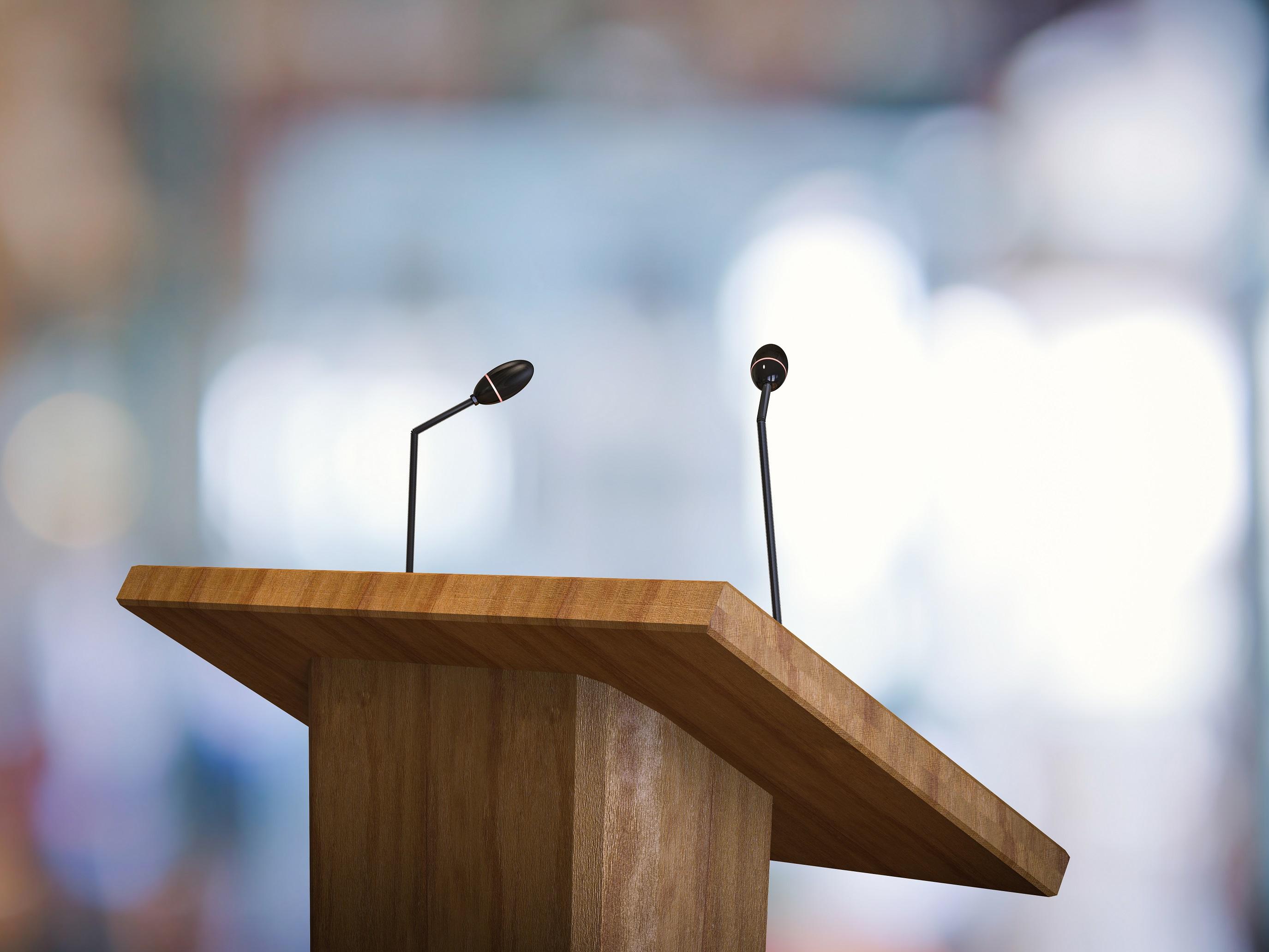Leader charisma . . . and how it can be learned

Oprah Winfrey delivered an insightful speech when she received the Lifetime Achievement Award at the Golden Globes in 2018. After her speech, the press and social media heatedly discussed the possibility of Oprah running for president in 2020 and the future under her lead.
Why would a nine-minute speech stir such a discussion? It is due to the reputation Oprah has built up and because the content of the speech appealed to and motivated many people. Nonetheless, not every person has the ability to create the same effect — even when reading the same speech notes. The unique quality that Oprah possesses is called charisma.
Charisma stems from a person’s use of symbolic influence and certain actions that followers attribute to an ideal leader [1]. Research shows that there are some rhetoric strategies contributing to this attribution [2]. What’s more exciting is that these strategies can be taught and learned [3]. Mastering these strategies makes people better leaders, perceptually.
What are the charismatic rhetoric strategies?
Here are some core strategies:
- Metaphor simplifies the message, stirs emotions, invokes symbolic meanings and is easy to recall.
- Stories and anecdotes relate the message to personal experience and are easy to understand.
- Moral conviction makes the leader seen as a representative of the group.
- Sentiments of the collective affiliates the group and the leader.
- Setting high expectations and communicating confidence that these goals can be met increases followers’ self-efficacy and their beliefs in a leader’s competence.
And here are some peripheral strategies:
- Contrasting messages frames and focuses on the main statement.
- Listing messages gives the impression of completeness.
- Raising rhetorical questions creates anticipation and puzzles that require an answer.
How do charismatic rhetoric strategies work?
A recent study analyzed the transcripts of TED talks and tweets and their impact on the public (e.g., number of retweets, total number of views and evaluations such as liking, inspiring and such). Researchers found that the use of these charismatic rhetoric strategies signals social impact [4].
For example, the tweets using metaphors have more retweets than the ones that don’t. Or the TED talks including more rhetoric strategies have more views and positive evaluations (inspiring and liking) than the others. That being said, using rhetoric strategies makes the source more impactful and increases the chance to become an opinion leader!
Moreover, through systematic training, managers who were trained to employ rhetoric strategies in daily leader-follower interactions were perceived more charismatic than those who have not been trained and than managers themselves before the training. Compared to the non-trained managers, followers associate more with the trained managers, trust them, see them as more competent and rate them as more prototypical [3].
Concluded from the research findings, we know that charismatic rhetoric strategies are powerful. They cast more impact on the audience and create an impression of competence and leader prototypicality, which provokes employees’ trust, liking and identification to that leader.
How does Oprah use charismatic rhetoric strategies?
Let’s take a look at Oprah’s speech and examine what rhetoric strategies she used to make her speech so encouraging.
She started with her childhood story (stories). She firstly contrasted her childhood hardship to the glorious achievement of Sidney Poitier (contrasting). Then she spoke of a sexual assault case that happened in Alabama (anecdote) and related the story to the #MeToo movement (moral conviction/sentiments of the collectives). In the end of the speech, she advocated for the unity of both males and females to eliminate sexual harassment and inequality for the future generation (Setting high expectations and communicating confidence that these goals can be met).
Now we know why Oprah was so highly accepted by the public after her speech. After all, Dr. Martin Luther King has been so influential; his ability to deliver a vision and insightful speeches is unquestionable. However, his true influence wouldn’t count if he didn’t implement his words. After cultivating one’s charisma, it’s time to put the words into practice!
Learn more! Read how the effects of rhetoric strategies would be ultimately ineffective without actions: https://fisher.osu.edu/blogs/leadreadtoday/blog/words-without-deeds-dont-count/
References
[1] Conger, J. A., & Kanungo, R. N. (1988). Charismatic leadership: The elusive factor in organizational effectiveness. Jossey-Bass.
[2] Jacquart, P., & Antonakis, J. (2015). When does charisma matter for top-level leaders? Effect of attributional ambiguity. Academy of Management Journal, 58(4), 1051-1074.
[3] Antonakis, J., Fenley, M., & Liechti, S. (2011). Can charisma be taught? Tests of two interventions. Academy of Management Learning & Education, 10(3), 374-396.
[4] Tur, B., Harstad, J., & Antonakis, J. (2018, July). Effect of Charisma in Informal Leadership Settings: The cases of TED and Twitter. In Academy of Management Proceedings (Vol. 2018, No. 1, p. 13242). Briarcliff Manor, NY 10510: Academy of Management.